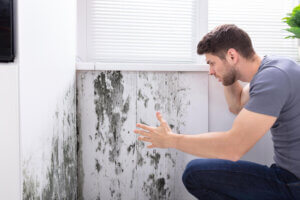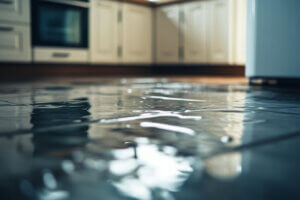Water damage can sneak up on you when you least expect it. What starts as a small leak can turn into a big problem without you even knowing. The signs of hidden water damage often hide in plain sight, like stains or unusual smells, and even small changes in your home’s appearance can be significant.
Ignoring these hidden issues might seem tempting, but doing so can lead to bigger problems in the long run. The effects of unseen water damage aren’t just limited to your home’s structure; they can also affect your health due to mold growth and other microorganisms.
Regularly checking your home for early clues of water intrusion can save you from future headaches and expenses. Knowing what to look for means you’re better equipped to catch problems early, keeping your home safe and dry.
Recognizing Tell-Tale Signs of Water Damage
Spotting water damage early can save you from bigger headaches down the road. One of the first signs to look for is discoloration or stains, especially on ceilings and walls. These are often indicators that water is seeping through your home’s structure. Keep an eye out for any dark or yellowish spots as they often signal moisture.
Peeling paint or wallpaper is another red flag. When paint or wallpaper peels, it may be due to water accumulating behind it. This hidden moisture can lead to bigger problems if left unchecked. It’s essential to address these signs promptly to prevent more severe damage.
A musty odor is a strong indicator of hidden water damage. This smell, often likened to wet cardboard, is usually due to mold or mildew in your home. If you notice such an odor, it’s crucial to find the source of the moisture quickly to prevent further mold spread, which can be harmful to both your home and your health.
Inspecting Vulnerable Areas in Your Home
Certain areas of your home are more likely to suffer from water damage. Regular checks of these areas help catch issues early. Common spots include:
– Basements: They often have poor drainage and can become waterlogged after heavy rains.
– Attics: Leaks through the roof can lead to water pooling and mold growth here.
– Under Sinks: Plumbing leaks can go unnoticed, causing damage beneath cabinets.
To conduct a thorough inspection, follow these steps:
1. Start by checking the basement and attic for damp spots or mold. Use a flashlight to see into dark corners.
2. Look under sinks for any pooling water or signs of leakage, like soft spots in cabinetry or bad odors.
3. Visually inspect ceilings and walls for any discoloration or peeling.
Using tools like moisture meters can improve the accuracy of your inspections. These devices measure the moisture content in materials, letting you know if there are hidden wet spots that can’t be seen with the naked eye. By keeping a regular watch on these vulnerable areas, you can prevent larger issues from developing.
Understanding the Implications of Untreated Water Damage
When water damage goes untreated, the consequences can be severe. One of the most significant impacts is structural damage to your home. Water can weaken the foundation, cause floors to warp, and even lead to the collapse of ceilings if left unchecked. Over time, the repeated exposure will erode materials, making them less stable and potentially hazardous.
Mold growth is another serious concern associated with water damage. Mold thrives in damp environments, and unchecked water intrusion provides the perfect breeding ground. Mold can be more than just a nuisance; it poses health risks, especially for individuals with allergies or respiratory conditions. Prolonged exposure can lead to severe health issues, making it crucial to tackle mold early.
Lastly, ignoring water damage can lead to expensive repairs down the line. Small issues might seem inexpensive to fix now, but if left untreated, the damage can escalate to the point of requiring major renovations. The cost of repairing structural damage and removing mold can put a significant strain on household finances. Addressing water issues promptly helps avoid these costly repairs.
Preventive Measures and Professional Assistance
Preventive measures can make a big difference in reducing the risk of hidden water damage. Regular maintenance tasks, such as checking window seals and inspecting your roof for leaks, can keep water at bay. Be sure to clean gutters frequently so water flows away from your home instead of backing into it.
Professional inspections play a crucial role in identifying issues that might not be visible to the untrained eye. Experts can use advanced tools and their experience to spot hidden water problems early, providing solutions before they escalate. Setting up annual inspections is a proactive way to maintain your home’s health.
Creating a home maintenance schedule can help you stay on track. Mark off regular checks for potential water entry points, and include seasonal tasks like roof inspections and window repairs. Consistent care will minimize the chance of water damage and keep your home in excellent condition for years to come.
Conclusion
Recognizing and addressing hidden water damage early can save you from a world of trouble. By keeping a keen eye out for signs and regularly inspecting vulnerable areas, you can catch problems before they become expensive. Implementing routine maintenance and seeking professional help when necessary ensures that your home remains a safe and secure place for you and your loved ones.
If you suspect water damage or need assistance with inspections, consider reaching out to Premier Emergency Water Removal for reliable water damage restoration. Our team has the expertise to help identify and resolve water issues efficiently, ensuring peace of mind and the longevity of your home. Protect your investment and live comfortably by addressing water concerns head-on.



